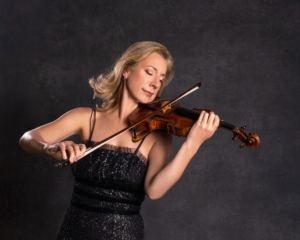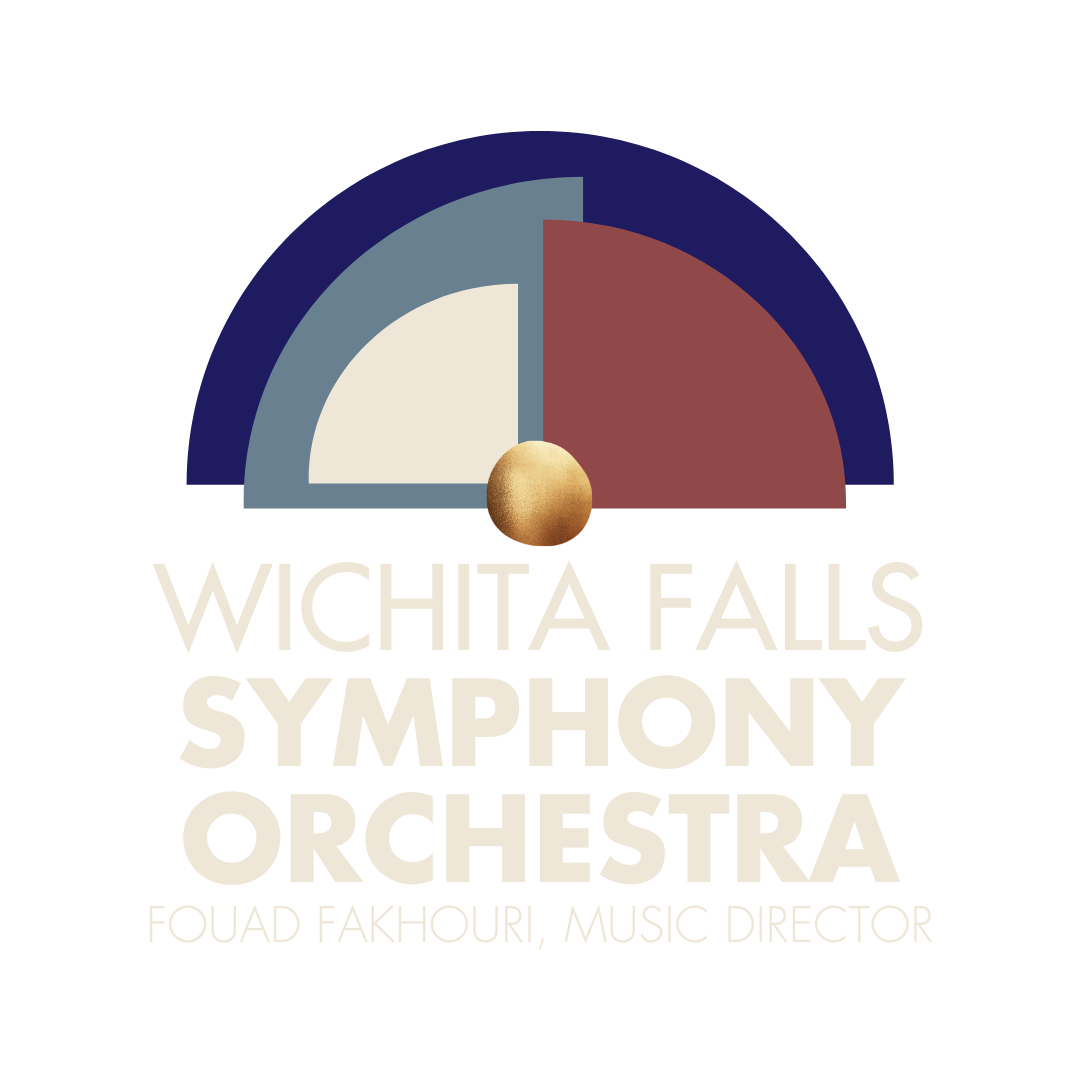Program Notes – April 26, 2025
Gala Flagello: Bravado (2023)
Gala Flagello (b. 1994) is a composer, educator, and one of the co-founding directors of the Connecticut Summerfest, a nonprofit contemporary music festival held in West Hartford since 2015. Flagello holds a PhD in Musical Arts from the University of Michigan and has been awarded composition fellowships at the Aspen Music Festival, the Gabriela Lena Frank Creative Academy of Music, and the Tanglewood Music Center, where she composed Bravado in 2023. Along with being inspired by teaching and the collaborative process, Flagello also finds inspiration in fostering social change through her compositions in areas such as gender equality and environmental and mental health advocacy. According to her composition notes on Bravado, the work “explores the many connotations of the word ‘bravado,’ a descendent of the Old Italian adjective bravo, meaning ‘wild’ or ‘courageous.’ A person with bravado can be seen as bold or reckless, daring or arrogant, confident or overbearing. The orchestra musically embodies this range of traits through the transformation of the piece’s primary melody.”
-written by Todd Giles
Felix Mendelssohn: Violin Concerto in E minor, Op. 64 (1844)
Felix Mendelssohn (1809–1847), born into a wealthy and culturally engaged German-Jewish family, was a child prodigy whose talents earned him comparisons to Mozart. By his teens, he had already composed symphonies, operas, and chamber works of astonishing maturity. Along with his accomplishments as a composer, Mendelssohn was a skilled conductor, pianist, and music organizer. He played a crucial role in reviving interest in the music of J.S. Bach, and his founding of the Leipzig Conservatory helped shape German music education for decades.
His Violin Concerto in E minor, composed between 1838 and 1844, stands as one of the most beloved works in the violin repertoire and a landmark in the concerto genre. It was written for Mendelssohn’s friend and colleague Ferdinand David, the concertmaster of the Leipzig Gewandhaus Orchestra, who collaborated closely on the technical and expressive aspects of the solo part. The result was a work that broke new ground in both structure and expression.
Rather than adhering strictly to the formal models of Mozart or Beethoven, Mendelssohn made several innovations that were ahead of their time. The soloist enters almost immediately—without the traditional lengthy orchestral introduction—signaling a shift toward a more integrated, continuous form of musical storytelling. The concerto also features a cadenza placed before the recapitulation rather than at the end of the movement, and the three movements are played without pause, connected by seamless transitions.
The first movement, Allegro molto appassionato, is driven by lyrical intensity and sweeping Romantic lines. Its passionate themes are passed between soloist and orchestra with elegant fluidity. The second movement, Andante, offers a serene and songlike contrast, reflecting Mendelssohn’s deep affinity for vocal melody. The finale, Allegro molto vivace, sparkles with the composer’s signature lightness and grace, calling to mind the whimsical energy found in his A Midsummer Night’s Dream overture and scherzos.
Although composed nearly a century before Rachmaninoff’s Symphonic Dances, Mendelssohn’s concerto similarly exemplifies a deep emotional expressiveness within classical forms. Both composers balance technical virtuosity with lyrical depth, though Mendelssohn’s approach favors clarity and elegance over the opulence and intensity of Rachmaninoff. In contrast to the bold contemporary energy of Gala Flagello’s Bravado, which explores fluctuating facets of character and identity, Mendelssohn’s concerto maintains a poised and idealized Romanticism—a reminder of music’s power to transcend time through beauty and form.
The concerto premiered in Leipzig in 1845 to enthusiastic acclaim and has remained a cornerstone of the violin repertoire ever since. Mendelssohn died just two years later, at age 38, leaving behind a legacy that bridged the Classical and Romantic eras with remarkable finesse.
-written by OpenAI, 2025
Sergei Rachmaninoff: Symphonic Dances, Op. 45 (1940)
Sergei Rachmaninoff (1873–1943) was an important transitional figure between the emotional lushness of Romanticism and atonal experimentation of the early 20th century. He was also one of the most important, and perhaps last, of the great composer-virtuosos following in the footsteps of Mozart, Beethoven, Chopin and Liszt. Rachmaninoff was hesitant to embrace modernism, insisting on nostalgically conveying emotion through traditional sounds and forms, while at times gently exploring some of the early 20th century trends in rhythm and harmony. His music, which was more popular and melodic than his peers such as Stravinsky and Prokofiev, runs the emotional gamut from somber introspection to triumphant celebration. His was a symphonic language inherited from Tchaikovsky, who he met when he was just sixteen. While his tonal, classically-structured music full of beautiful harmonies and melodies did not contribute anything groundbreaking to the new century, his highly personal use of then-becoming-outmoded forms still keeps audiences enthralled today, which is more than many early 20th century composers of a more experimental bent can say.
Symphonic Dances, Op. 45, which was Rachmaninoff’s last major work, was composed in Long Island, New York in 1940. The previous year, with the threat of war once again looming across Europe, Rachmaninoff returned to the US with his family to live for a second time; the first was in 1918, when he fled his homeland to escape the October Revolution. Nearing seventy years of age, Rachmaninoff decided that his 1942–43 touring season would be his last, which it indeed was, as he died in Beverly Hills that March.
Symphonic Dances is an orchestral suite, a form dating back to the late 14th century. The suite, which is a set of instrumental pieces based on dances, became popular in the Baroque era with composers such as Telemann and Bach. In Mozart’s time, the form fell out of favor in place of sonatas, symphonies, and concerti. The suite made a comeback in the 19th century with works such as Tchaikovsky’s Nutcracker Suite and Grieg’s Holberg Suite. Along with Rachmaninoff’s Symphonic Dances, the 20th century saw several other notable suites, including Holst’s The Planets and Ravel’s Miroirs. The form even found its way into jazz and rock with the music of Duke Ellington and Pink Floyd.
The three movements of Symphonic Dances can be read as a kind of summation of Rachmaninoff’s compositional style—lush harmonies, complex and energetic rhythms, emotional depth, and a sense of nostalgia. The work was premiered by the Philadelphia Orchestra under the baton of Eugene Ormandy on January 3, 1941. The first movement opens quietly with a three-note motif, which is reinforced by a bold rhythmic theme introduced by the brass and developed throughout the movement. The slow middle section features a sweeping melody on the alto sax which in turn is carried on by the strings. After revisiting the main material, the central theme is briefly recalled before the movement comes quietly to a close. The second movement features a waltz, which speaks to Rachmaninoff’s sense of nostalgia for an aristocratic past. The movement’s middle section introduces a more energetic contrasting theme before returning to the introspective mood of the opening. The finale starts with leisurely winds, gradually building momentum into a brisk section with jazz-inspired rhythmic accents. A poignant trumpet rendition of the Gregorian Dies irae, first heard in the 13th century Requiem Mass, brings a moment of profound gravity, but the lively spirit soon resumes. The Dies irae, which Rachmaninoff incorporated into several compositions throughout his lifetime, finds a fitting place in this, his culminating work. Although the chant lingers, the movement concludes with a triumphant and energetic coda, bringing the work to a powerful and celebratory end.
-written by Todd Giles




